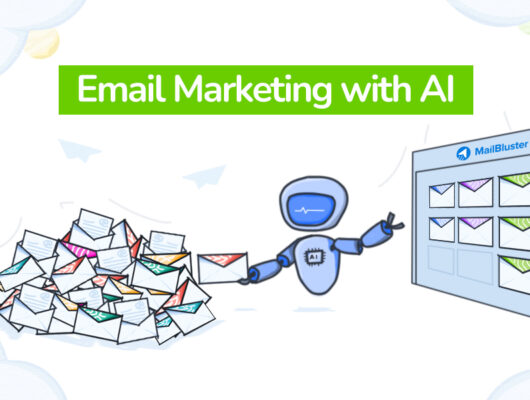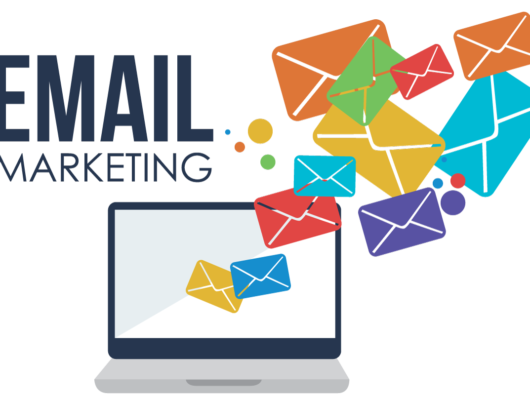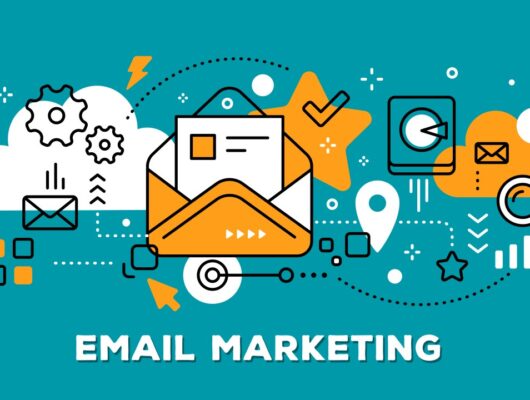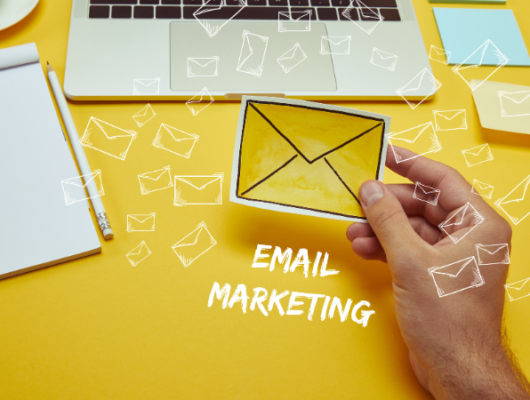Email marketing remains one of the most powerful tools for e-commerce businesses to engage with customers, increase conversions, and drive revenue.
With a well-crafted email marketing strategy, you can nurture customer relationships, promote new products, and re-engage past buyers.
This article explores effective email marketing tactics for e-commerce businesses to enhance customer experience and improve sales.
1. Build and Segment Your Email List
Your email list is one of your most valuable assets. The first step is to build a high-quality, permission-based list of subscribers who are genuinely interested in your products and offers.
- Collect emails at every touchpoint: Use sign-up forms on your website, checkout page, and social media platforms to gather emails.
- Offer incentives for sign-ups: Encourage visitors to subscribe by offering discounts, exclusive content, or free resources.
- Segment your audience: Segment your email list based on customer behavior, demographics, and purchase history. This enables you to send more personalized and relevant emails, leading to higher engagement and conversion rates.
2. Create Engaging and Personalized Content
Personalization is key to making your emails stand out in an overcrowded inbox. Tailored content helps foster stronger connections with your customers and drives them to take action.
- Personalize subject lines: Include the recipient’s name or reference their previous purchases or browsing behavior to catch their attention.
- Send relevant product recommendations: Use data from customers’ past behavior or purchase history to suggest products they’re likely to be interested in.
- Dynamic content: Include dynamic images or content that adapts to the user’s preferences or geographic location to increase engagement.
3. Automate Email Campaigns
Automation helps you save time while maintaining consistent communication with your customers. By setting up automated email sequences, you can ensure timely and relevant messages are delivered to your subscribers.
- Welcome emails: Send a welcome email immediately after a user subscribes, introducing your brand and offering a special discount for their first purchase.
- Abandoned cart emails: Remind customers about the items they left in their cart, offering incentives like discounts or free shipping to encourage them to complete their purchase.
- Post-purchase emails: After a customer makes a purchase, send follow-up emails to thank them, ask for feedback, or offer related products.
- Birthday/Anniversary emails: Send personalized messages or special offers to customers on their birthday or the anniversary of their first purchase.
4. Craft Compelling Subject Lines
The subject line is the first thing recipients see, and it plays a crucial role in whether or not they open your email. A great subject line should be attention-grabbing, clear, and provide value.
- Create urgency: Use words like “limited time,” “hurry,” or “last chance” to instill urgency and prompt immediate action.
- Be concise: Aim for subject lines that are short and to the point, ideally under 50 characters.
- Make it personal: Use the recipient’s name or details from their previous interactions to make the email feel more personal.
- Test different subject lines: A/B testing subject lines can help you find out what resonates best with your audience.
5. Design Mobile-Friendly Emails
With most users checking their email on mobile devices, it’s essential to design emails that are responsive and look great on all screen sizes. A mobile-friendly email ensures that your content is easy to read, and your call-to-action buttons are easy to tap.
- Simple, clean layout: Keep the design simple and easy to navigate, with clear headings and concise copy.
- Large CTA buttons: Ensure that call-to-action buttons are big enough to tap easily on mobile screens.
- Responsive design: Use email templates that automatically adjust to different screen sizes.
6. Include Clear and Compelling Call-to-Actions (CTAs)
Every email should have a clear objective, whether it’s driving traffic to your website, encouraging a purchase, or gathering feedback. Your CTA should be prominent and direct.
- Make it action-oriented: Use phrases like “Shop Now,” “Claim Your Offer,” or “Learn More” to encourage recipients to take action.
- Keep it simple: Focus on one clear CTA per email to avoid confusion.
- Position CTA buttons strategically: Place them above the fold so they’re visible without scrolling.
7. Test and Optimize Campaigns
Email marketing is not a one-size-fits-all approach. To achieve the best results, constantly test and optimize your email campaigns based on the data you gather.
- A/B testing: Test different versions of your subject lines, email content, CTA buttons, and images to see which ones perform the best.
- Track metrics: Monitor open rates, click-through rates, conversion rates, and unsubscribe rates to measure the success of your campaigns.
- Refine your strategy: Use the insights gained from testing and metrics to continually improve your email content, design, and frequency.
8. Leverage Drip Campaigns for Customer Nurturing
Drip campaigns are automated email series that nurture leads over time by sending a sequence of targeted emails based on specific triggers or actions. These campaigns are great for guiding potential customers through the buying journey.
- Nurture new subscribers: Start with a series of welcome emails that introduce your brand and products, followed by educational content or promotional offers.
- Abandoned cart reminders: Send a sequence of reminders for users who have abandoned their carts, providing them with incentives to return and complete their purchase.
- Win-back emails: Re-engage inactive customers with special offers or reminders of what they’re missing.
9. Create a Sense of Urgency and Exclusivity
People are more likely to act when they feel like they might miss out on something. Use time-sensitive offers, limited-time promotions, or exclusive deals to create a sense of urgency.
- Flash sales: Offer short-term discounts that are only available for a limited time to create urgency.
- Exclusive offers: Send special deals only available to email subscribers, making them feel valued and encouraging loyalty.
10. Maintain Consistent Sending Frequency
Finding the right balance in email frequency is key. Too many emails can overwhelm subscribers, while too few can cause them to forget about your brand.
- Avoid over-emailing: Respect your subscribers’ inboxes by sending emails at appropriate intervals, whether it’s once a week, bi-weekly, or monthly.
- Set expectations: Let subscribers know how often they can expect to hear from you when they sign up for your email list.
Conclusion
Email marketing is a powerful, cost-effective tool for e-commerce businesses to drive traffic, increase sales, and build long-term relationships with customers.
By crafting personalized, valuable content, automating key email sequences, and continually testing and optimizing your campaigns, you can achieve higher engagement and better ROI.
The key is to provide your subscribers with content that resonates with them, keeps them informed, and encourages them to take action.







